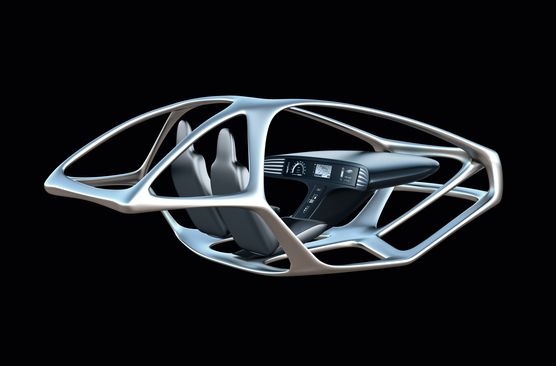Asia
EMEA

LANXESS Canada Contacts
Contact our Sites in Canada
Media Inquiries
General Inquiries
Please click here to e-mail LANXESS Canada with product inquiries and general requests.
Global Press Releases
2017-10-17
Electric mobility
LANXESS is committed to materials for new forms of mobility
- Wide range of applications for engineering plastics
- Focus on electric drives, autonomous driving, heavy goods vehicles and new logistics concepts
- Extensive range of materials available
- HiAnt support for successful projects with customers
Specialty chemicals company LANXESS sees new, more environmentally friendly forms of mobility as a major growth area for its Durethan polyamides, Pocan polybutylene terephthalates (PBT) and Tepex thermoplastic composites. “Our material developments are primarily concentrated on applications for electrifying the powertrain of both human-controlled and autonomous vehicles, and on building up the requisite infrastructures and logistics. Another area of focus is the new lightweight materials and technologies that help, for example, to extend the range of electric vehicles,” explains Jan Bender, head of Marketing EMEA in LANXESS’s High Performance Materials (HPM) business unit.
Wide range of potential applications
Potential applications for LANXESS thermoplastics in hybrid and all-electric vehicles – some already proven in series production – include components for charging systems, mounts and cell holders for battery systems, and sensors and housing parts for electric motors. The materials also offer huge potential in the electric mobility infrastructure, for example in housing parts, circuit breakers and terminals for charging stations. In the field of autonomous driving, the polyamides and polyesters are ideal for the connectors in sensors, displays and control units, for instance. “Our highly-filled polyamides and composites also have lots of potential in the lightweight design of backrests and seat shells for new seating concepts,” says Bender.
Another focus of the material development is components for new communications systems in heavy goods vehicles that enable communication between vehicles or between a vehicle and the infrastructure, and also make it possible to conduct a remote diagnosis of a vehicle’s condition. “We are looking at components for adaptive cruise control systems and radar systems that will prevent collisions, for example. Logistics concepts for urban movement of goods using drones or robot-controlled electric vehicles also represent an interesting application area for our materials,” explains Bender.
Customized high-tech materials
LANXESS already has an extensive range of materials for new mobility concepts. These include, for example, heat-dissipating polyamides for components in electrical and electronic assemblies subject to thermal stresses, a wide range of flame-retardant materials with top ratings in fire tests to international standards, easy-flow thermoplastics for thin-walled, intricate components and polyamides that can withstand continuous service temperatures of up to 230 °C. “We are currently developing materials for electromagnetically compatible components that either have conductive additives or can be metallized,” says Bender.
HiAnt – engineering expertise that benefits customers
LANXESS’s HiAnt engineering expertise is helping customers at every stage in the process of developing components for new forms of mobility – from the initial idea to the start of production. “Our years of experience with plastic components for the automotive, electrical and electronics industries have given us a familiarity with the environment and thinking in these industries that we are able to build on,” explains Bender. The services include feasibility, weight, cost and risk analyses, application-specific recommendations for material selection, advice about plastic-compatible molded part design, and providing material parameters for calculating important load scenarios. “We also simulate the manufacturing process, mold filling and component behavior, for example in terms of static and dynamic load-bearing capacity, natural frequency, resistance to stone chippings and crash behavior,” says Bender.
Forward-Looking Statements
This company release contains certain forward-looking statements, including assumptions, opinions, expectations and views of the company or cited from third party sources. Various known and unknown risks, uncertainties and other factors could cause the actual results, financial position, development or performance of LANXESS AG to differ materially from the estimations expressed or implied herein. LANXESS AG does not guarantee that the assumptions underlying such forward-looking statements are free from errors nor does it accept any responsibility for the future accuracy of the opinions expressed in this presentation or the actual occurrence of the forecast developments. No representation or warranty (expressed or implied) is made as to, and no reliance should be placed on, any information, estimates, targets and opinions, contained herein, and no liability whatsoever is accepted as to any errors, omissions or misstatements contained herein, and accordingly, no representative of LANXESS AG or any of its affiliated companies or any of such person's officers, directors or employees accept any liability whatsoever arising directly or indirectly from the use of this document.
LANXESS is a leading specialty chemicals company with sales of EUR 7.7 billion in 2016 and about 19,200 employees in 25 countries. The company is currently represented at 75 production sites worldwide. The core business of LANXESS is the development, manufacturing and marketing of chemical intermediates, additives, specialty chemicals and plastics. Through ARLANXEO, the joint venture with Saudi Aramco, LANXESS is also a leading supplier of synthetic rubber. LANXESS is listed in the leading sustainability indices Dow Jones Sustainability Index (DJSI World) and FTSE4Good.
- Gallery




